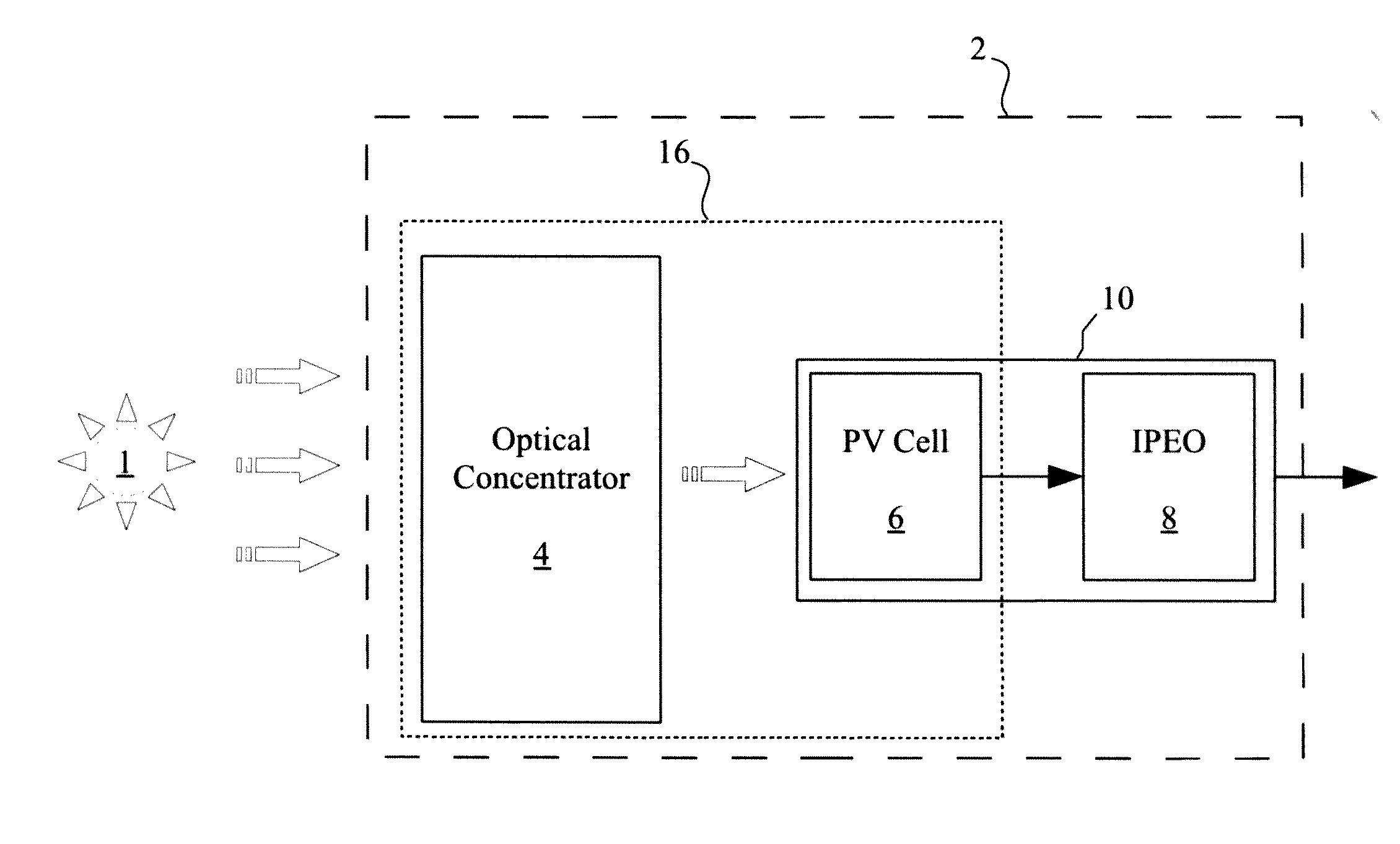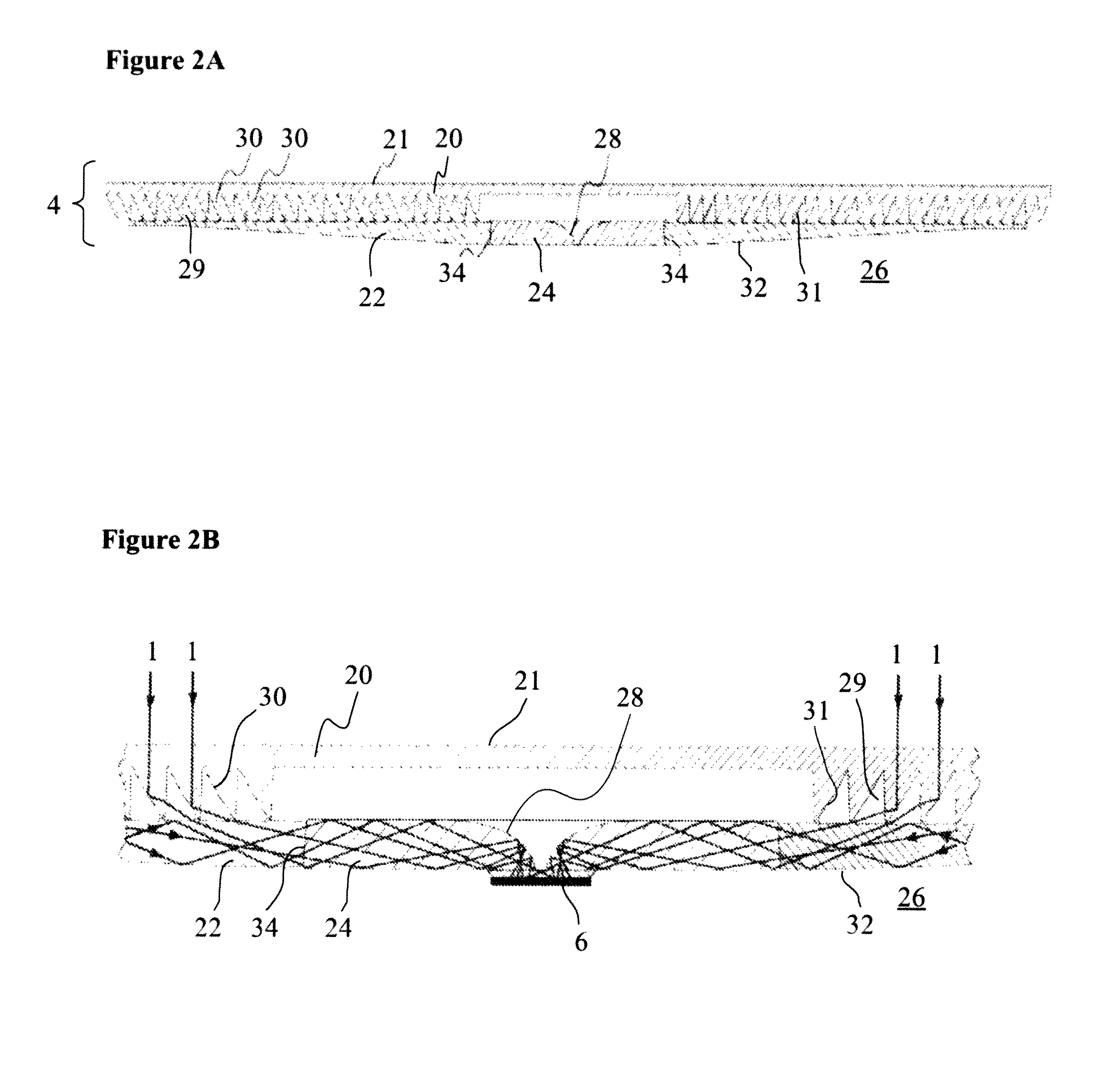Integrated Photovoltaic Module
a photovoltaic module and integrated technology, applied in the field of solar energy, can solve the problems of limited power generated by each string of pv cells, inability to efficiently harness solar power as a cost-effective source of electrical power, and limited performance of arrays of solar panels
- Summary
- Abstract
- Description
- Claims
- Application Information
AI Technical Summary
Problems solved by technology
Method used
Image
Examples
Embodiment Construction
[0049]The embodiments described herein provide a sunlight concentration photovoltaic (CPV) apparatus and method of converting solar power to electrical power by an array of interconnected photovoltaic (PV) cells. These embodiments provide localized power conditioning of output from a PV cell receiving concentrated light, and thereby ameliorate at least some of the inconveniences present in the prior art.
[0050]In one embodiment there is provided a sunlight concentration photovoltaic apparatus comprising a plurality of optical concentrators adapted to receive input sunlight, each optical concentrator comprising at least one optical element having a first optical efficiency and each one of the plurality of optical concentrators having a corresponding second optical efficiency, a plurality of sunlight receiver assemblies, each sunlight receiver assembly comprising a photovoltaic cell arranged to receive sunlight output from a corresponding one of the plurality of optical concentrators a...
PUM
 Login to View More
Login to View More Abstract
Description
Claims
Application Information
 Login to View More
Login to View More - R&D
- Intellectual Property
- Life Sciences
- Materials
- Tech Scout
- Unparalleled Data Quality
- Higher Quality Content
- 60% Fewer Hallucinations
Browse by: Latest US Patents, China's latest patents, Technical Efficacy Thesaurus, Application Domain, Technology Topic, Popular Technical Reports.
© 2025 PatSnap. All rights reserved.Legal|Privacy policy|Modern Slavery Act Transparency Statement|Sitemap|About US| Contact US: help@patsnap.com



